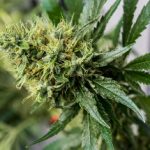Medicinal cannabis, THC & CBD
The medicinal use of cannabis is evolving rapidly in numerous countries. What started as a patient-driven call for legal access to cannabis medicines has developed into a worldwide industry and an expanding class of therapeutic products. What is a cannabis medicine and what is it used for? What are the active ingredients and what are their therapeutic effects?
Medicinal use of cannabis
Cannabis is one of the oldest known medicinal plants. In almost every ancient handbook on plant medicine it is described commonly in the form of a tincture or a tea.
A cannabis medicine is typically prescribed by a doctor and dispensed by a pharmacist. There are various therapeutic applications, of which pain relief is the best known. Bedrocan produces several different, unique cannabis products intended for medicinal use.
Also read about:
Pharmaceutical guidelines
Cannabis sativa L. is only considered as an ingredient in medicines if it has been grown according to pharmaceutical guidelines. These are strict rules whereby the end product is guaranteed to contain a standard cannabinoid composition and be free of heavy metals, pesticides and other contaminants. The cannabis should be tested by an independent laboratory for each batch produced. Cannabis from coffeeshops, dispensaries, or from illegal (home) cultivation, for example, is not considered a medicine. This is because a prescriber, pharmacist or patients never knows exactly what these cannabis products contain and therefore can never predict its effect or potential side effects.
Cannabinoids
Like other plants, Cannabis sativa L. is made up of hundreds of chemical compounds. Some people refer to indica, sativa, or ruderalis types or talk about hemp, but all of these belong to the same species: Cannabis sativa L. What sets the cannabis plant apart from all others are the unique chemicals it contains, the cannabinoids. Cannabinoids are the active ingredients that deliver the therapeutic effects of cannabis medicines. No other plant in the world produces cannabinoids. There are more than 100 different cannabinoids that have been identified. The most well-known of these is THC (delta-9-tetrahydrocannabinol) and CBD (cannabidiol). However, other minor cannabinoids present in the cannabis plant are thought to be involved in subtle modulation or enhancement of medicinal effects triggered at the cannabinoid receptor. This effect may be the result of their independent biological activity, or through synergy with the major cannabinoids THC and CBD.
The cannabinoids, are released in a vapour when cannabis flower is heated to a temperature of or above 180°C (356°F).
THC
THC is the most abundant cannabinoid in ‘psychoactive’ cannabis plant types or cultivars. This substance possesses mind-altering effects, which most users describe as a very pleasant and relaxing experience. At higher doses THC can result in intoxication effects. THC is also responsible for many of the medicinal effects. This may include, among others, reduction of affective qualities of pain, nausea, vomiting and muscle spasms, and improvement of sleep and appetite.
CBD
The cannabis plant also contains CBD; the second major cannabinoid in cannabis. CBD has medicinal effects, is a psychoactive substance, but does not cause intoxication at high doses like THC does. Specifically, co-administration of CBD with THC has been shown to reduce the occurrence or intensity of typical side effects of THC, including heightened euphoria (feeling high), anxiety, and short term memory loss. Studies indicate that CBD could be effective in easing the symptoms of various difficult-to-control conditions, such as hard-to-treat childhood epilepsy, and may also be used in rheumatoid arthritis, diabetes, post-traumatic stress disorder (PTSD), anxiety disorder, and antibiotic-resistant infections.
Trichomes
These functional components of the cannabis plant are produced in resin glands (glandular trichomes), which are located on the entire surface of the plant. The largest concentration of these glands are found in the mature, unfertilised flowering heads of the female plant.
Terpenes
Terpenes are the aromatic compounds that give cannabis cultivars their distinctive smells and taste. To date more than 120 different terpenes have been identified in cannabis. Unlike cannabinoids, all major terpenes present in cannabis (e.g. myrcene, alpha-pinene, and beta-caryophyllene) can be found abundantly in nature.
These terpenes are suspected to be involved in different interactions with cannabinoids. They may work synergistically with cannabinoids, to modify or enhance their therapeutic effects in specific ways. Although research on the potential interactions between terpenes and cannabinoids is still in its infancy, terpenes have been shown to produce their own pharmacological effects: anti-inflammatory (myrcene), neuroprotective (myrcene) and analgesic (beta-caryophyllene).
Due to the variety of cannabis terpenes, there are many different combinations in which they can be present in a cannabis plant. Each distinct cannabis cultivar has its own unique composition of cannabinoids and terpenes.
Please note
The medicinal use of cannabis is bound by terms and conditions. If you are a prospective patient you are advised to consult a health professional before using cannabis as a medicine, and to be well-informed about the local laws regarding the medical use of cannabis.







